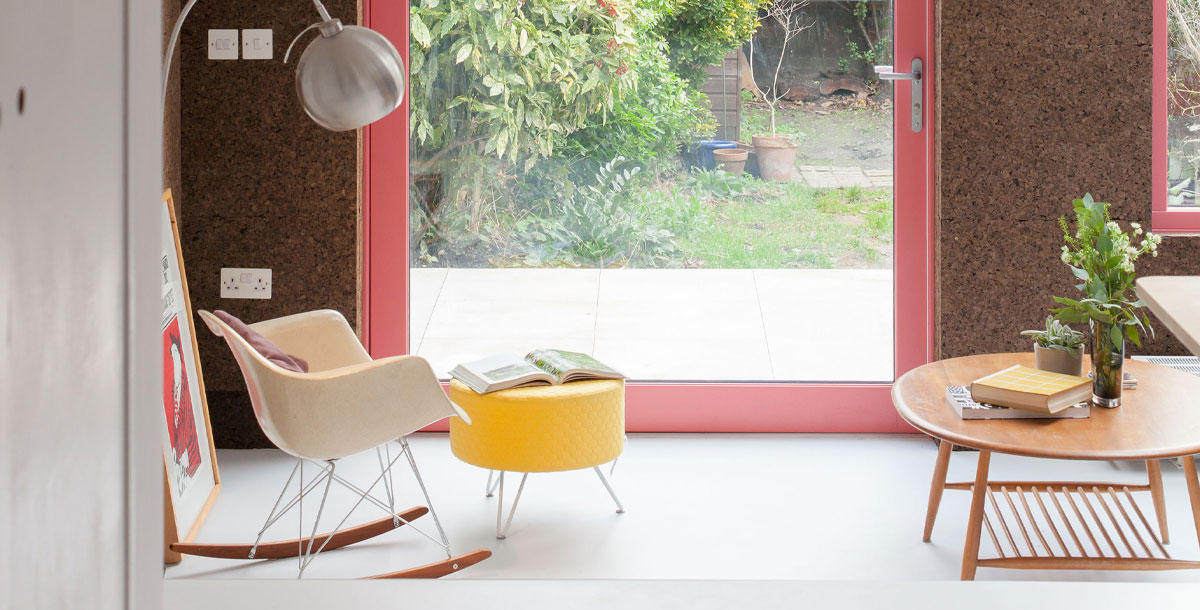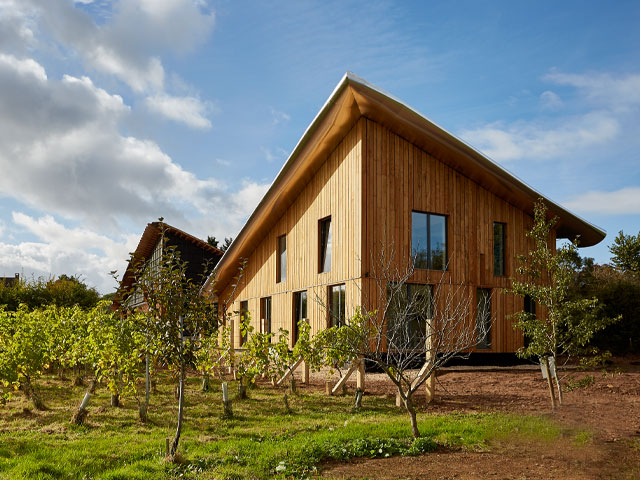Eco insulation: a guide to materials
More sustainable options include cork, hempcrete, straw and more
High energy prices mean that now is a good time to ensure your home has the highest level of thermal efficiency possible. Given the climate crisis, it also makes sense to opt for natural and eco-insulation products that have a lower environmental impact.
There are a growing number of sustainable options on the market, from traditional construction materials like straw bales to recycled products made from PET bottles and newspaper. Your choice of material may depend on whether you are embarking on a self-build or renovation, as retrofitting insulation, especially in older properties, can be more difficult than starting from scratch.
Suppliers such as Back to Earth, Ecological Building Systems and the Green Building Store are valuable sources of information on eco-insulation products and processes, whether you’re renovating or embarking on a self-build project.
‘Eco building firms carry out detailed moisture risk modelling for insulation, especially on older and harder to treat homes,’ says Paul Testa, director at Hem Architects.
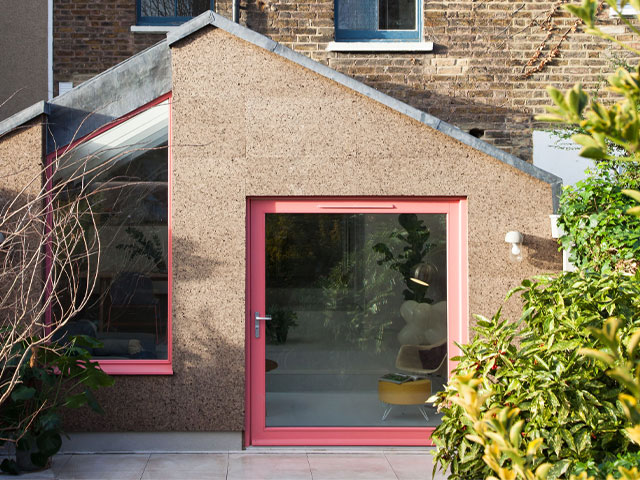
Nimtim Architects used cork inside and out for this extension in south London. Photo: Megan Taylor
Eco-insulation materials
1. Cork
‘Cork is sustainable, naturally water-resistant, recyclable and weathers to a silver-grey colour over time,’ says Nimi Attanayake, director of Nimtim Architects. ‘It’s a versatile insulating option that can be used on exterior and interior walls, for flooring and to insulate a roof.’
Nimtim Architects designed the rear extension of a house in Lewisham, south London, using cork – a sustainable product made from the re-harvestable bark of cork oak trees – as an insulating cladding material.
Cork’s insulating properties were maximised by covering all of the extension project’s exterior walls with the material, with panels also cladding some of the interior walls (the EcoCork boards cost £55.20 per sqm from Ty-Mawr Lime).
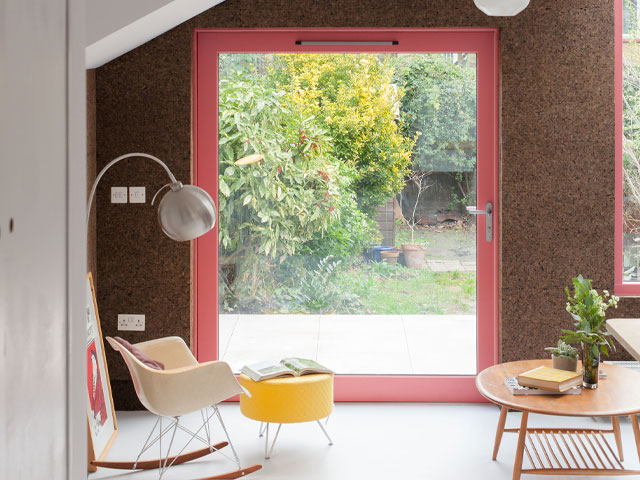
Nimtim Architects used cork panels on exterior and interior walls, the floors and roof in this project. Photo: Megan Taylor
2. Hempcrete
Nimi also champions hempcrete, a composite product of hemp with a natural lime binder that ‘limits a building’s heat loss’. The low-carbon, compostable material ‘can be used for both new-builds and retrofit projects to enhance insulation within a structure,’ she adds.
‘Hempcrete is different from eco-friendly building materials such as clay and straw as it petrifies over time, drawing carbon dioxide from the surrounding air and setting like stone,’ adds Lina Bellovičová of Ateliér Lina Bellovičová, who designed an experimental hempcrete house for a remote forest location in the Czech Republic. ‘It is also resistant to pests, fire and mould, and is breathable, recyclable and highly insulating, locking away more carbon than is emitted during the building process.’
Hempcrete was also used by Paul and Blanka in their budget eco-build in Grand Designs: The Street.
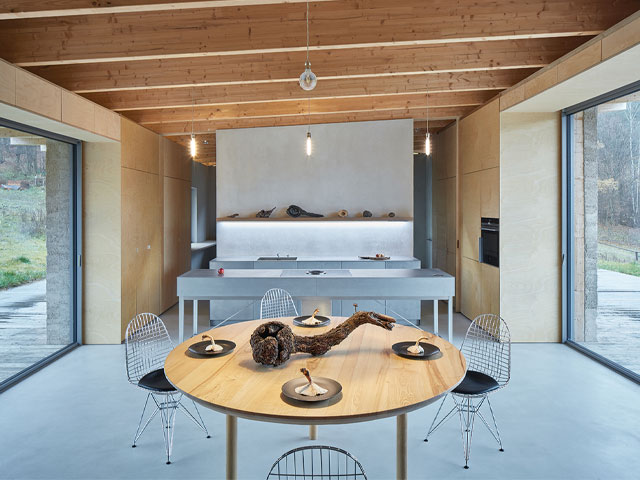
Lina Bellovičová designed this hempcrete house in the Czech Republic. Photo: BoysPlayNice
3. Straw bales
Straw bale, which insulates much in the same way as sheep wool with air pockets that create a thermal break, has a long history as a construction material. Straw bales are also naturally fireproof and, as they are load bearing, can be used as a replacement in wall building for concrete, plaster, wood, fiberglass, stone and gypsum.
You may remember the Grand Designs Straw Bale house, where architects Sarah Wigglesworth and Jeremy Till left the straw bale insulation on show to the world. ‘The straw bale walls have been great,’ said Sarah. ‘Various people have tested them, and found their humidity is similar to that of timber, which means we won’t get mould growing inside the house. They’re energy efficient and very cost effective to build with.’
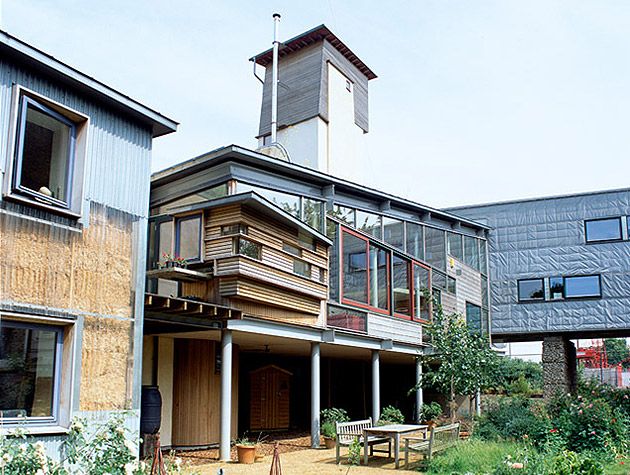
The Grand Designs Straw Bale house. Photo: Jefferson Smith
4. Newspaper insulation
Mark and Candida Diacono’s eco-farmhouse in Devon, which featured on Grand Designs, used recycled newspaper as insulation. Also known as cellulose insulation, it tends to be used in timber-frame constructions where it can be damp-blown into wall cavities. Designed by Orme Architecture, further eco-measures for the farmhouse include triple glazing, a thermodynamic heating and water system and a rainwater collection system.
Architect Richard Hawkes, who built the Grand Designs eco arch in Kent, used 10 tons of newspaper as insulation. Combined with triple-glazed argon-filled windows and other eco-measures, it is one of the best-performing Passivhaus dwellings in the UK.
Architecture practice Arco2, which specialises in creating eco-friendly buildings, designed a five-bedroom home on a clifftop in Cornwall using an innovative insulation material called Warmcel, which is made from recycled newspaper.
5. Other recyclable materials
Recyclable materials such as polycarbonate reduce waste from the construction industry. ‘It can be used as a cladding system or a roofing material for an outbuilding such as a shed,’ says Nimi.
Insulation made from recycled PET from plastic bottles is lightweight, strong and shatterproof. While natural insulation options are usually more thermally efficient, it is often cheaper to use recycled materials over natural and manmade insulation that use virgin materials.
6. Sheep wool insulation
Sheep wool can be expensive, but it has excellent insulating, air-purifying properties, and considering it can last up to 60 years, it offers good value for money. Naturally fire-resistant and non-irritant, sheep wool insulation has largely the same application and uses as mineral wool insulation in the home. It’s also entirely recyclable. Sheep wool insulation is ideal for period or heritage properties buildings that need to regulate humidity carefully as it retains condensation, releasing it slowly as it dries.
7. Wood fibre
Wood fibre insulation is available in rolls as wood wool, as well as semi-rigid and rigid boards. Wood wool has a high heat storage capacity, good acoustic insulation qualities and is fit for the insulation of floors, walls and roofs. Rigid wood fibre insulation can be installed against solid walls without the need for a timber-frame support.
Eco-insulation grants
Your local authority’s website should be your first port of call when determining whether any grants are available to offset the cost of your eco-insulation upgrades. The Energy Company Obligation scheme is the main financial initiative supporting energy efficiency improvements, though it is targeted towards low-income, vulnerable, fuel-poor households and the least energy efficient homes in EPC bands D-G.
Remember that VAT on all home insulation was cut from 5% to zero in the government’s 2022 Spring Statement.

